Introduction
This is going to be an ultra-short blog post because the project is really short – it's a super-basic development board for the Pi Pico. I grew tired of having a Pi Pico dangling from the PC USB port with bits of wire hanging off it, just to do a bit of prototyping. Although the Pi Pico can be used as-is, there is some minimal circuitry needed for more effective use, such as a power supply, supply switching circuitry, and a reset button. Some space for assembling a few additional chips or modules would help too! So, that's what this project delivers on. See James' video (demonstrating the Rev 2.0 board) here: Why You Need a Raspberry Pi Pico Development Board by Shabaz - Workbench Wednesdays 70
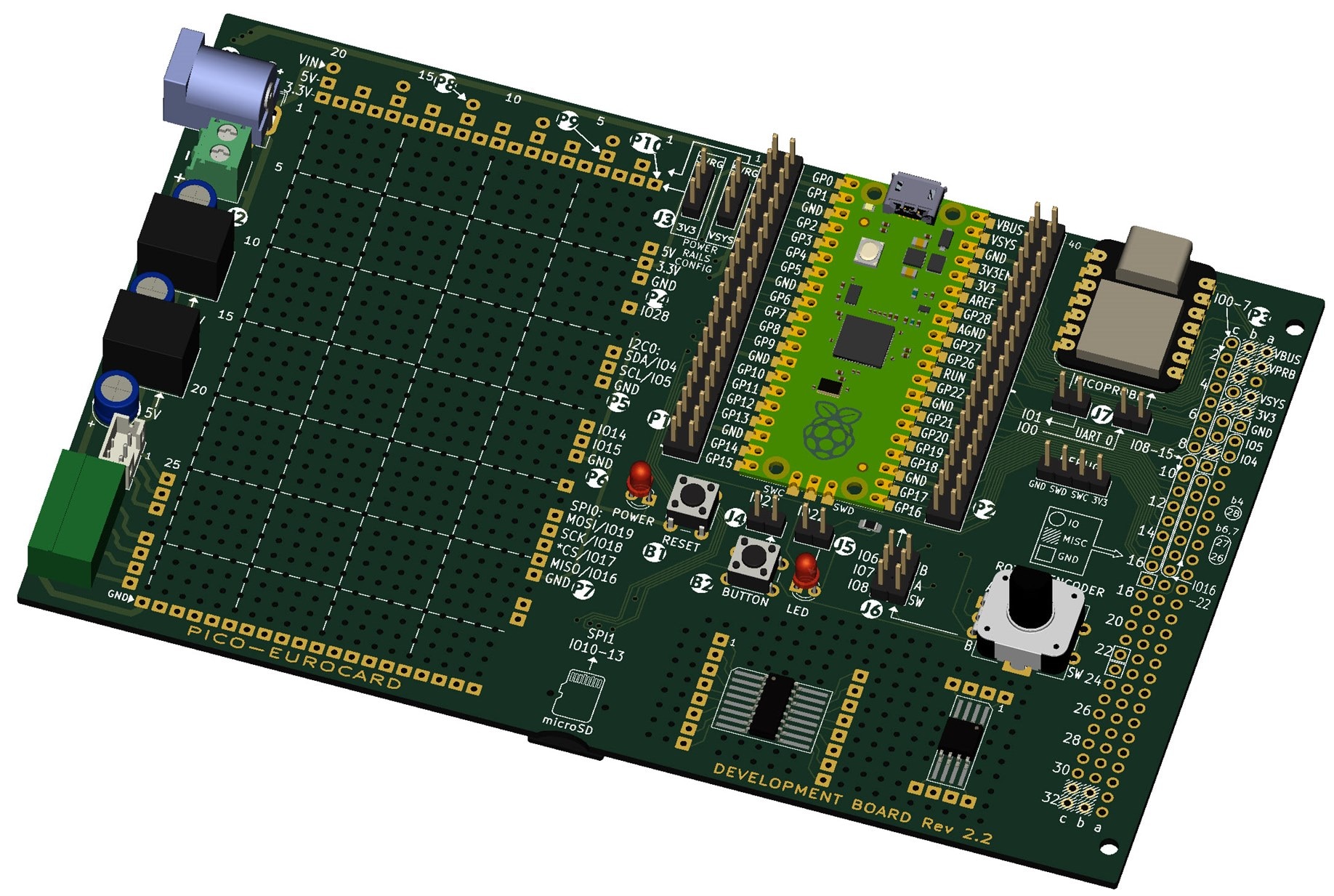
Photo of the earlier Rev 1.0 board:
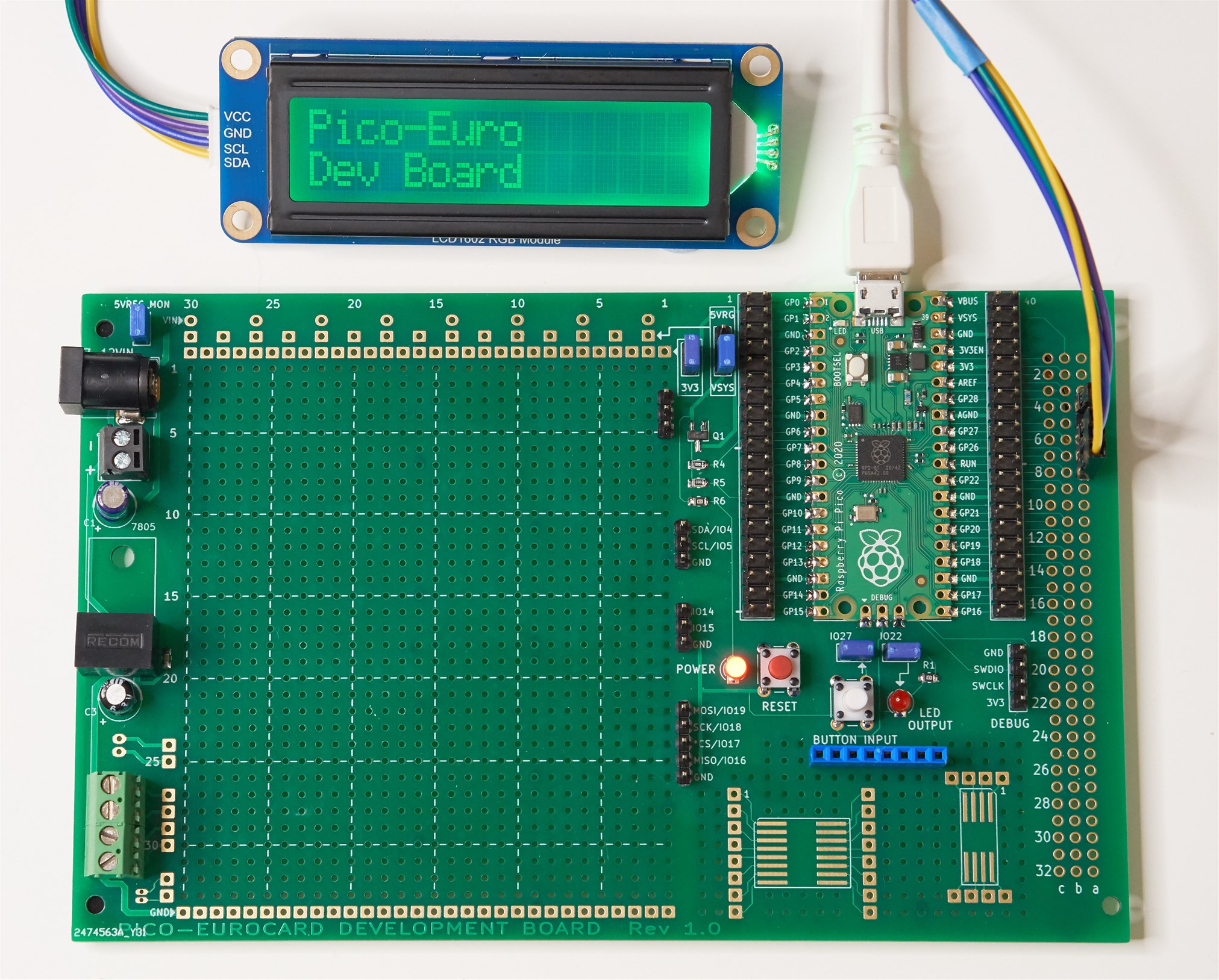
What does it do?
This project only does a fraction more than the bare minimum that could be needed to develop projects. There aren't any fancy features on the board; there's nothing to get in the way of the large prototyping area! The image here shows what the board contains.
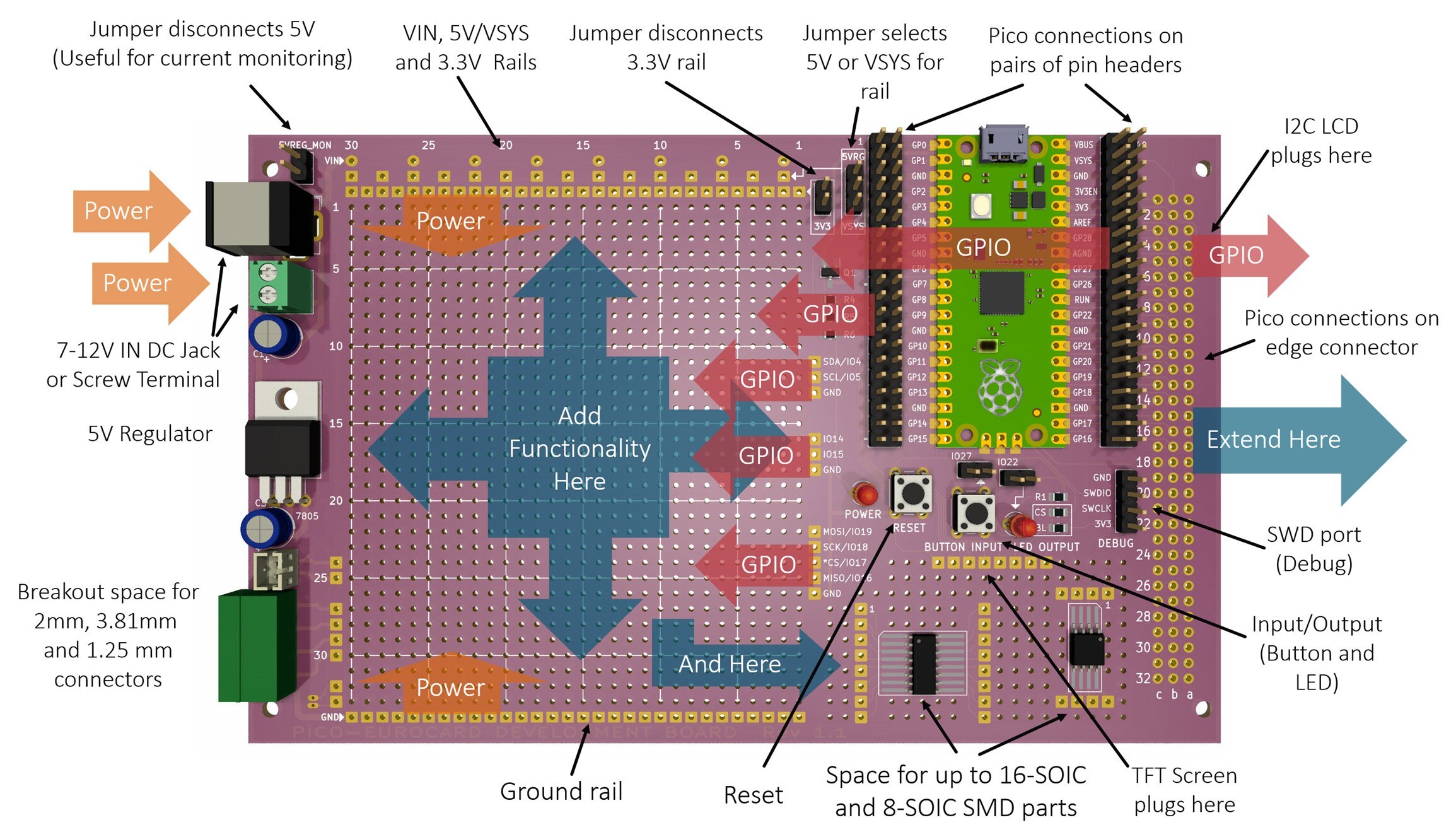
This is the solder side of the board:

Building It
The board can be ordered from any PCB manufacturer like JLC PCB or Elecrow. It cost about $10 for five boards, not including postage.
The schematic and bill of materials are on GitHub (the board can be hand-soldered within about 20 minutes I expect). Not all connectors need to be purchased or soldered, since it really depends on how you wish to prototype. I intend to use very thin 30 AWG single-core wire to patch connections, instead of using jumper wires. I may replace the two DIL pin headers that flank the Pico, with two SIL pin headers instead, so that I can solder wires into the empty holes for attaching circuitry, and use the SIL pin headers for testing purposes (for instance attaching a logic analyzer with jumper wires).
Alternatively, the card edge connector pins can be used for attaching test equipment, since all the Pico GPIO pins are exposed there too.
Note: This is the Rev 1.x schematic. Scroll further below for Rev 2.x schematics!
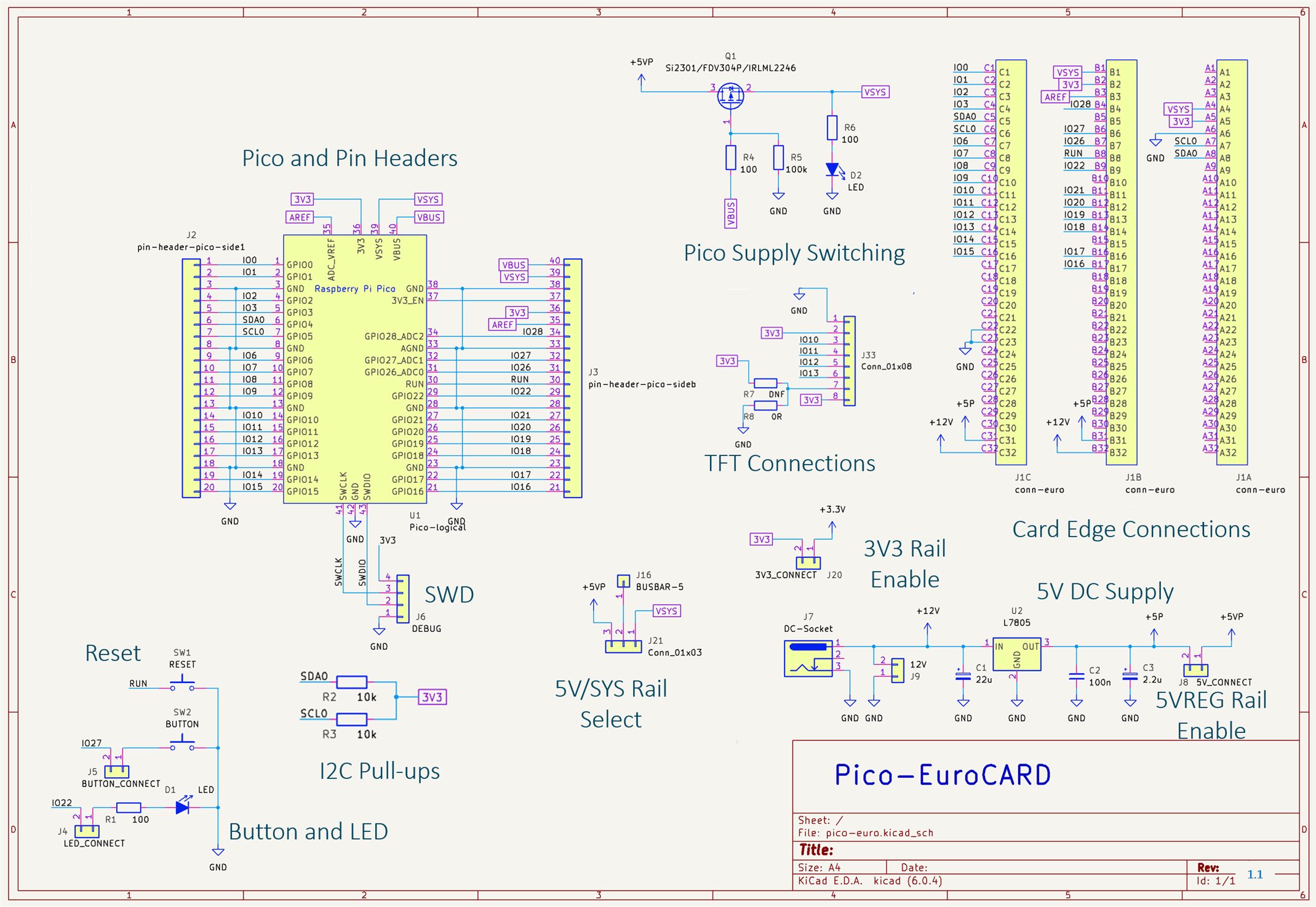
Summary
An ultra-simple development board for the Pi Pico was presented. If it proves useful, I might create a second revision of it at some point (edit: there is now a revision 1.1 board on Github). I have yet to build the first revision 1.0 board (I have ordered some boards, and will post photos of it all in a week or two time when the boards arrive).
One thing I would like to improve on is providing space for a heatsink for the 7805 regulator (edit: revision 1.1 now has sufficient space to suit some typical TO-220 heatsinks). If the 7805 gets too hot with the revision 1.0 board, it can be swapped with a pin-compatible DC-DC converter replacement, such as MP-K78L05-1000R3 (on Rev 2.x boards, use these DC-DC converters instead: 5V: R-78E5.0-0.5 and 3.3V: R-78E3.3-0.5 , they will fit properly on the board).
Technically the board violates the Eurocard specification, so another improvement would be to rearrange things so that the Pi Pico is rotated by 90 degrees and brought to the left side so that the board can be slid into Eurocard enclosures. I currently can't see myself using this basic development board in such an enclosure, so for now I took the simpler option of not considering it. I might need a 4-layer board design for a compliant Eurocard because the current cheaper 2-layer design uses the edges of the board to route supply traces, which is no good for metal sliding rails in enclosures. So, all-in-all, for now, I didn't feel too bad that it violates Eurocard, with the benefit that it's a cheaper design as a result.
Thanks for reading!
Notes
See the comments section for improvements made for the Rev 1.1 board (files are at the pico-eurocard GitHub link along with the revision history). In particular, the Rev 1.1 board supports I2C LCD displays, and/or SPI TFT screens, which the earlier Rev 1.0 didn't.
Update: Board Revision 2.x
There is now a new revision 2.x board series. The main differences are:
* No TFT screen header pins. Some TFT screens were subtly different, and I was running out of space, so unfortunately if a TFT screen is needed, it will need to be patched to the appropriate connections manually. Another workaround is to use an I2C character display, there are pins for that on the large 3 x 32-way connector on the right of the board
* Slightly reduced perfboard area
* 5V and 3.3V DC-DC converters are now used instead of the 7805 and heatsink. This saves space, and provides two power supplies instead of one.
* MicroSD card support
* Built-in Picoprobe
* Built-in rotary encoder
Rev 2.x Schematic
The 2.x board series has the following schematic (slight differences between 2.0, 2.1 and so on, but the component values and connections reflect all the dot-revisions, and anything significantly changed in any future dot-revision will be documented here). The component reference identifiers (such as J1, J2, and so on) have some differences compared to the silkscreen, but it is easy to identify which component is which. I reduced and simplified the silkscreen compared to the schematic, to get rid of the least-important bits of visual detail on the board.
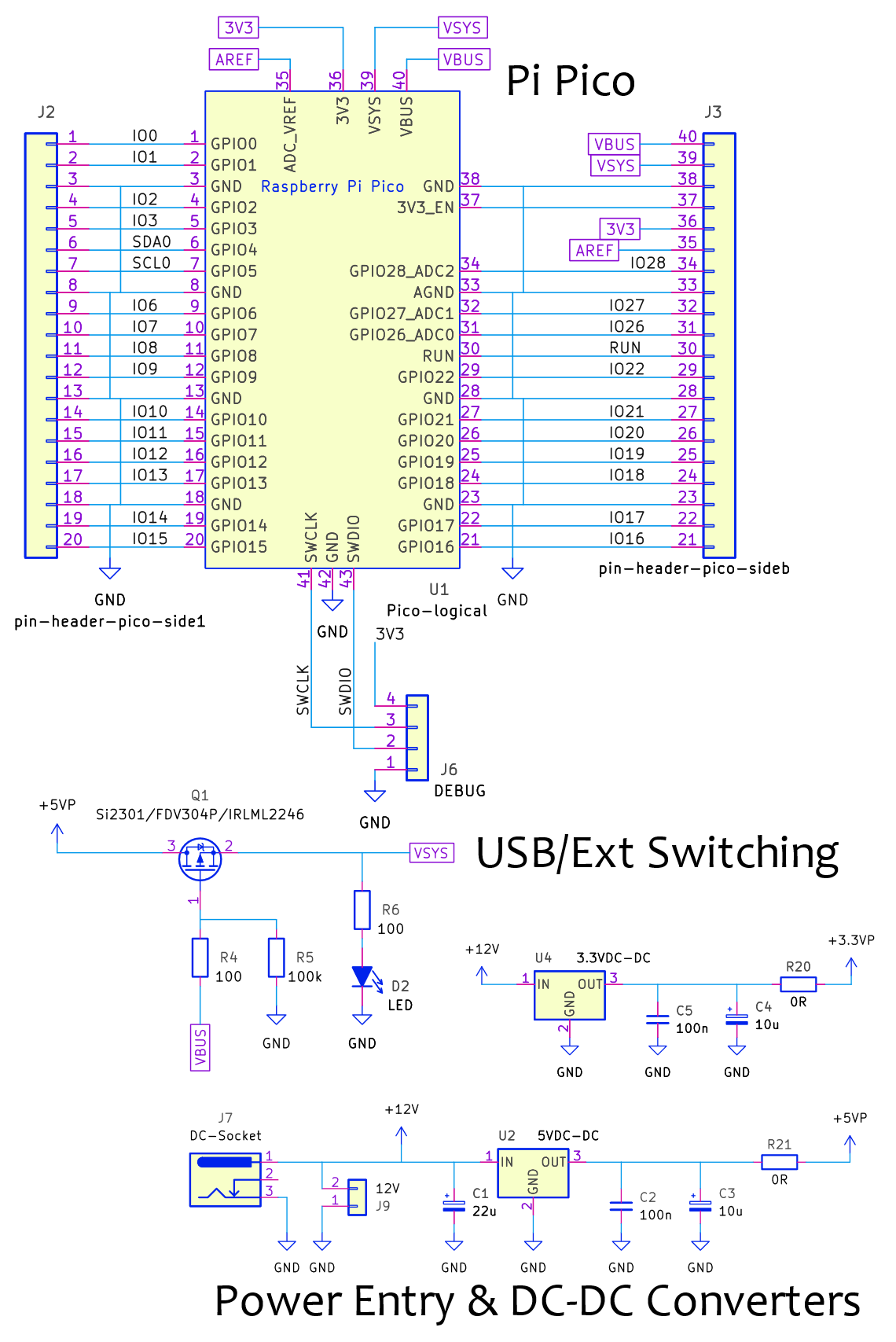
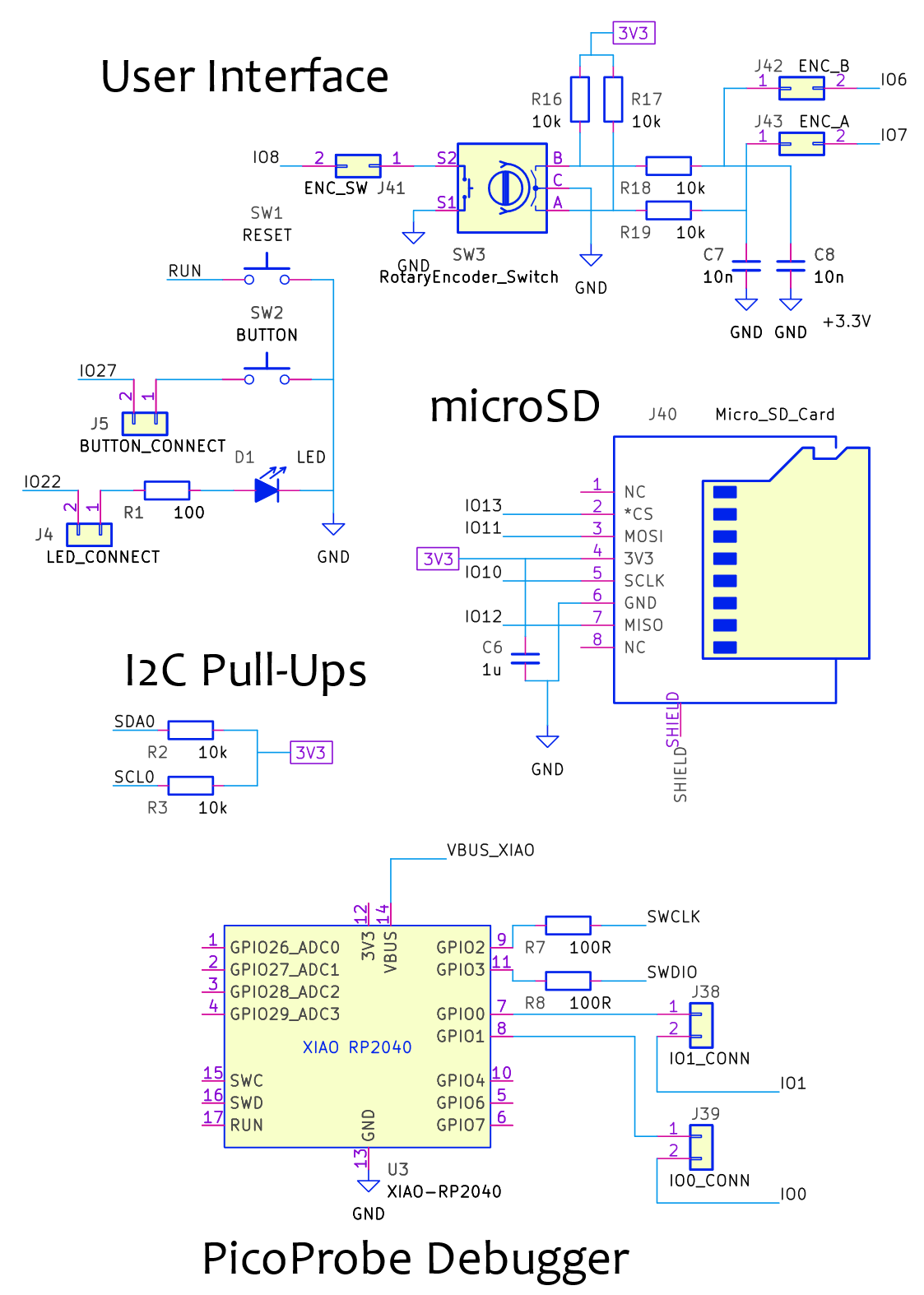
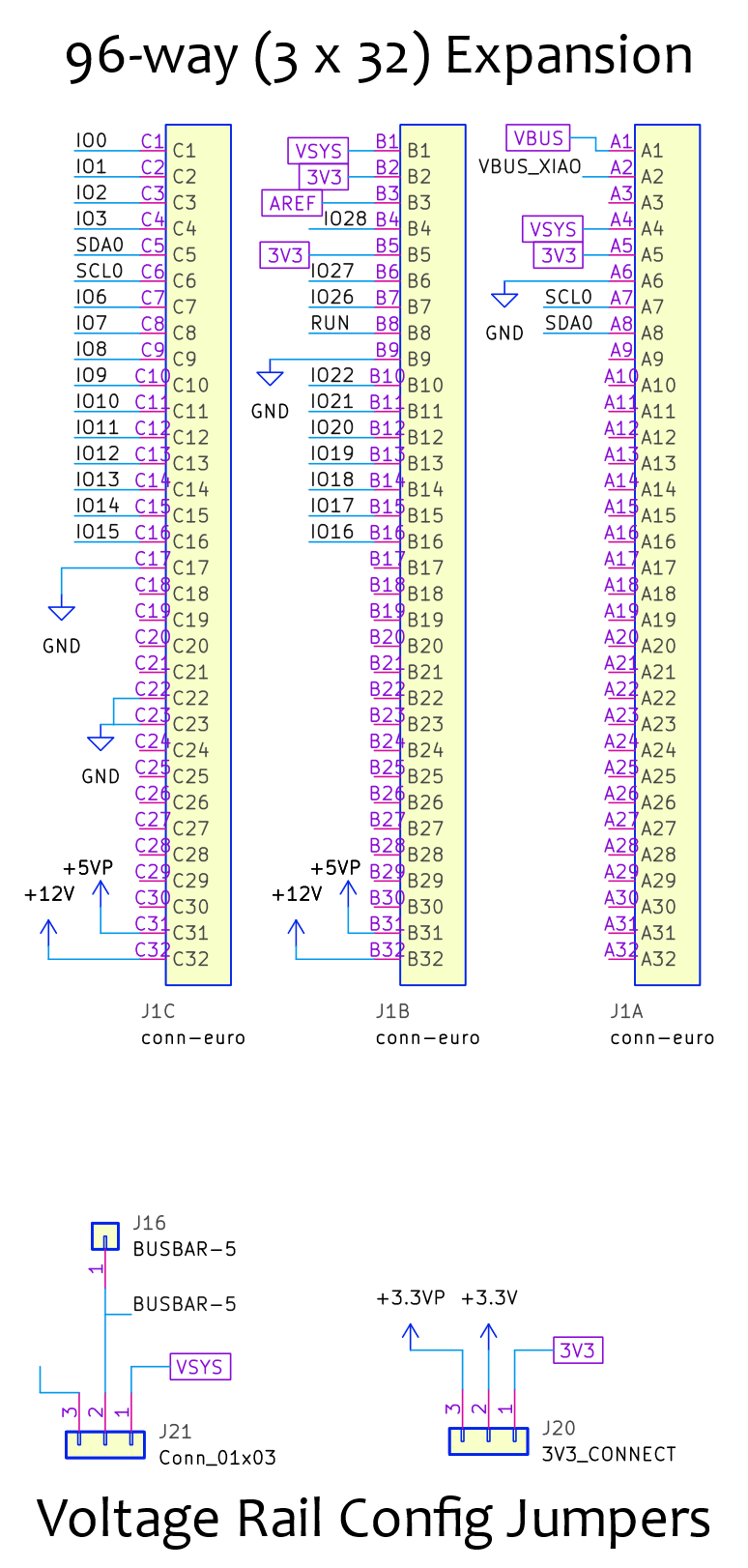
Pin Assignments
The default pin assignments on the board are shown in the diagram. The assignments can be removed or reassigned for most pins, by using shorting jumpers or jumper cables.

This diagram from Jan contains more detail:
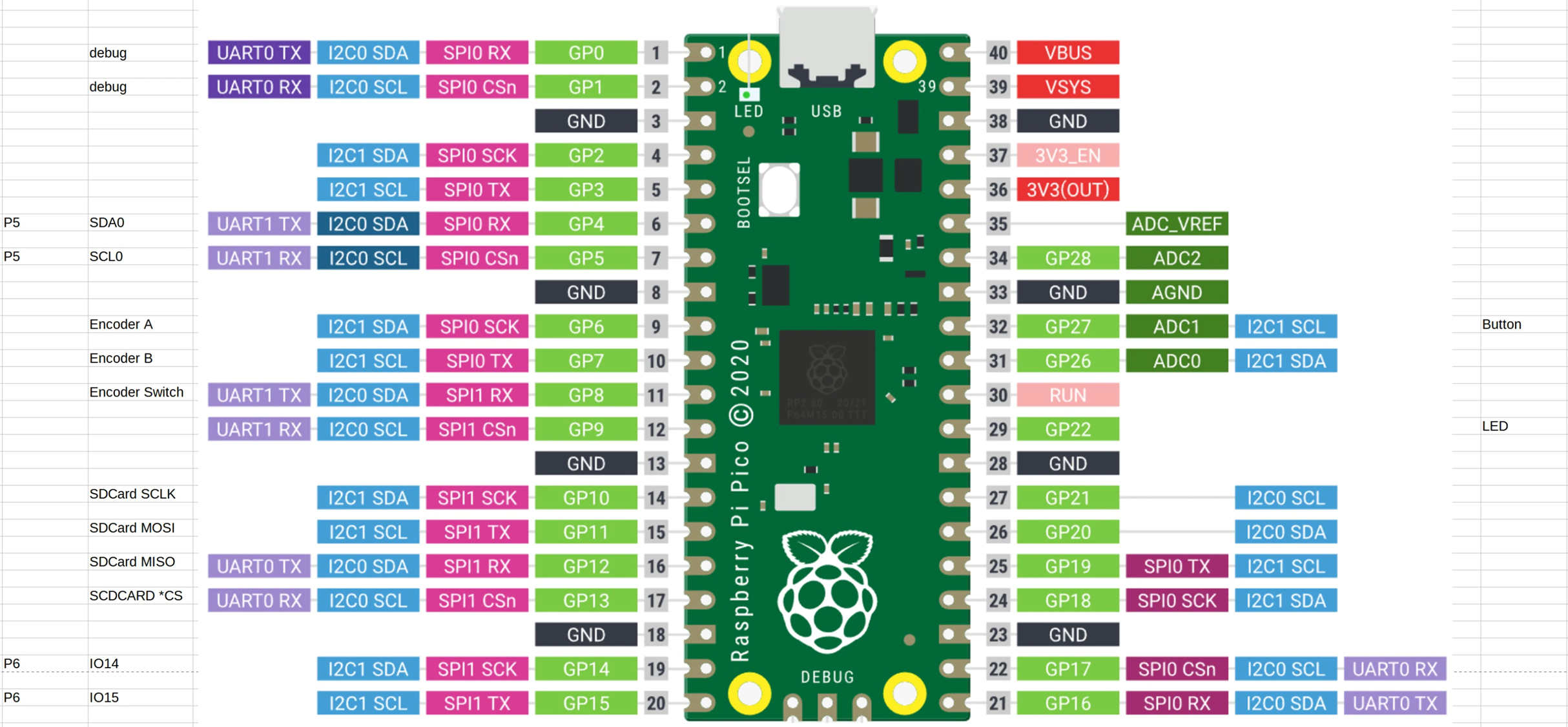









Top Comments